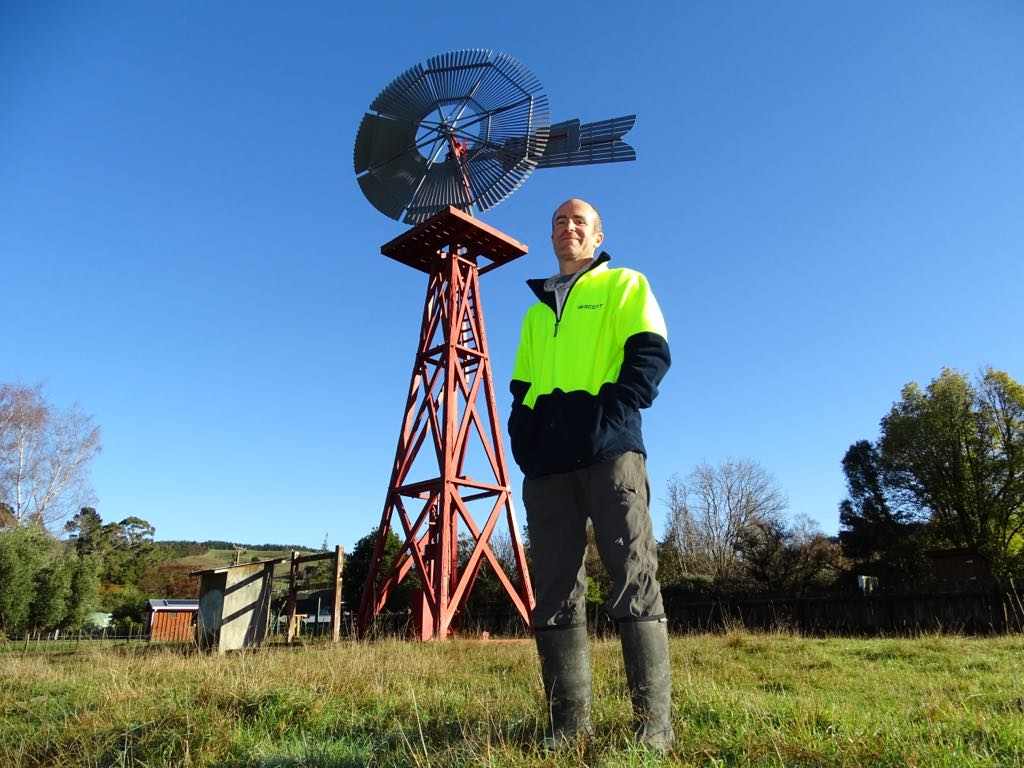Team Effort Restores Belgrove Windmill by Anne Hardie
Reproduced with permission from the Waimea Weekly, Wednesday 19th June 2024

The old Belgrove windmill has stood tall for 126 years and after strong winds tore off a section of its wooden blades a few months ago, a team effort has restored the structure and ensured it continues as a landmark for decades to come.
It’s a landmark of national significance as it is a rare relic of the water supply once used on New Zealand railways. When it was built in 1898, the railway existed between Nelson and Belgrove and was being extended to Motupiko. The windmill was large enough to supply the steam engines and water for the small town of Belgrove. Restoring the wooden relic, which sits opposite the former Belgrove Tavern, was a one of a kind project for those involved. ITM in Richmond replaced the old totara blades with yellow cedar and joinery supervisor Isaac Farrer-Elphick says every blade has a different angle so it meant getting the right angles for every one of them. Once recreated, Brown and Syme painted the wooden pieces.
Scott Construction had the job of getting the structure down and back together. Wakefield based foreman Chris Dallyn, who was part of the team, said it certainly had its challenges.
“It wasn’t easy. especially putting it back up, so we had to tie it to the fence to stop it turning. The last thing you want is it turning while you’re up there.”
The team, which included Scott Construction’s engineering workshop, used a crane and a bucket truck to resurrect the windmill. Chris says there would have been no crane or bucket truck when the windmill was built in 1898 and it would have taken a bit of ingenuity to erect it back in those days.
He’s pretty sure the windmill would still pump water if it was connected to a pump as the wooden tower is still sound. During his time working on the windmill he has heard that the trains that stopped to fill with water sometimes struggled to get up enough speed as they headed up the hill to Spooners tunnel. If that happened, the train rolled back down the track and had another go at building up speed to make the climb.
The windmill is managed by the Department of Conservation, and Heritage New Zealand traces its history back to those early days when it supplied water to power the steam engines. It describes the windmill as ingeniously designed with a system that prevented the holding tanks from overflowing by using a bucket for the overflow. Once full, the bucket’s weight pulled the sail out of the wind, effectively stopping the mill. The bucket emptied after an hour through a small tap and then rose up the tower, moving the sail back into the wind. Steam engines eventually became obsolete and in 1933 the Belgrove line was closed and dismantled. However the Belgrove windmill continued to provide a domestic water supply until it ceased operating in the 1960s.
It has been restored a couple of times over the decades and Scott Construction has long carried out quarterly maintenance checks to help retain Belgrove’s piece of railroad history. Heritage NZ’s site says the windmill has architectural importance and its simple, effective design has technological interest.

Comments (0)